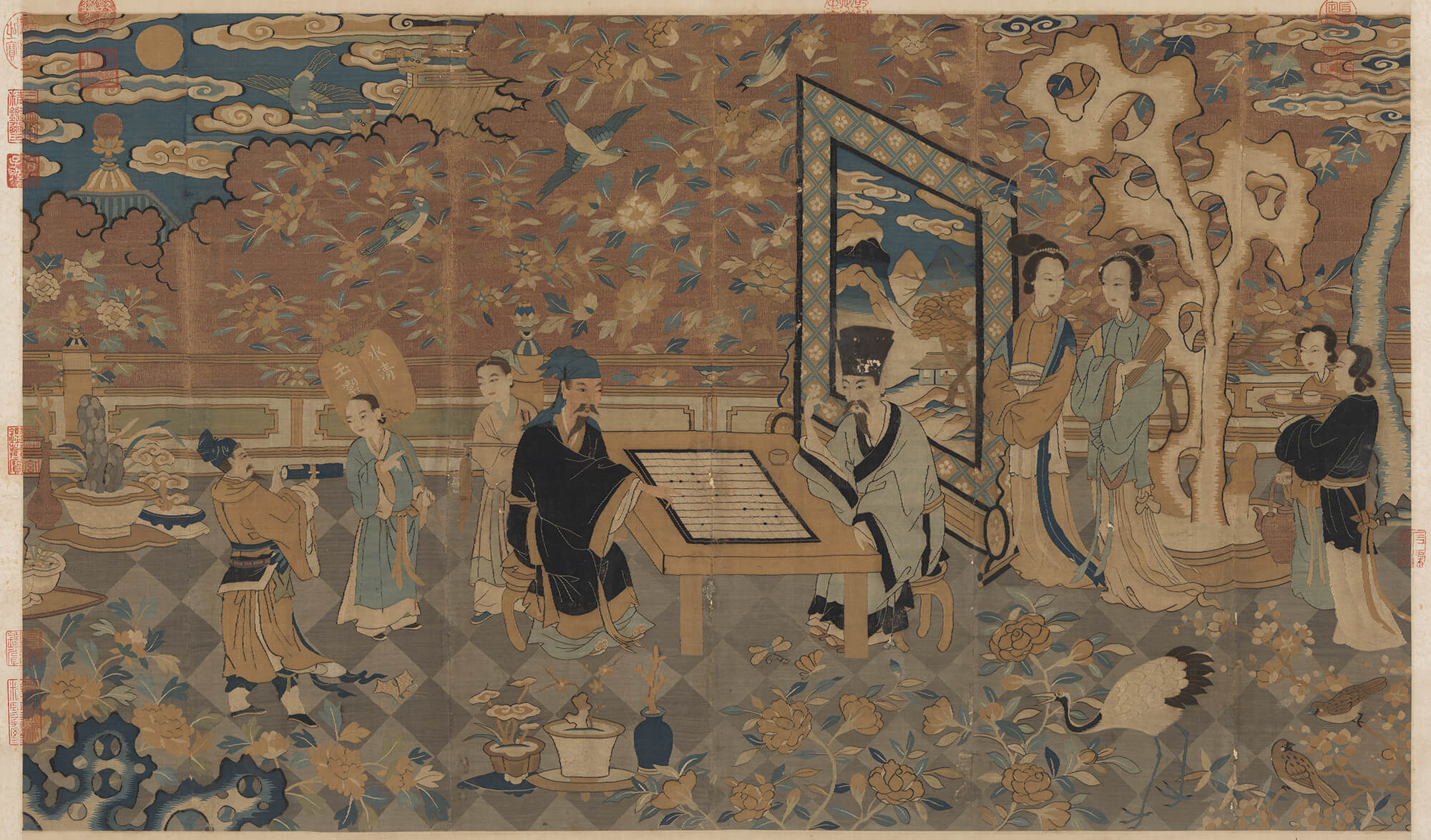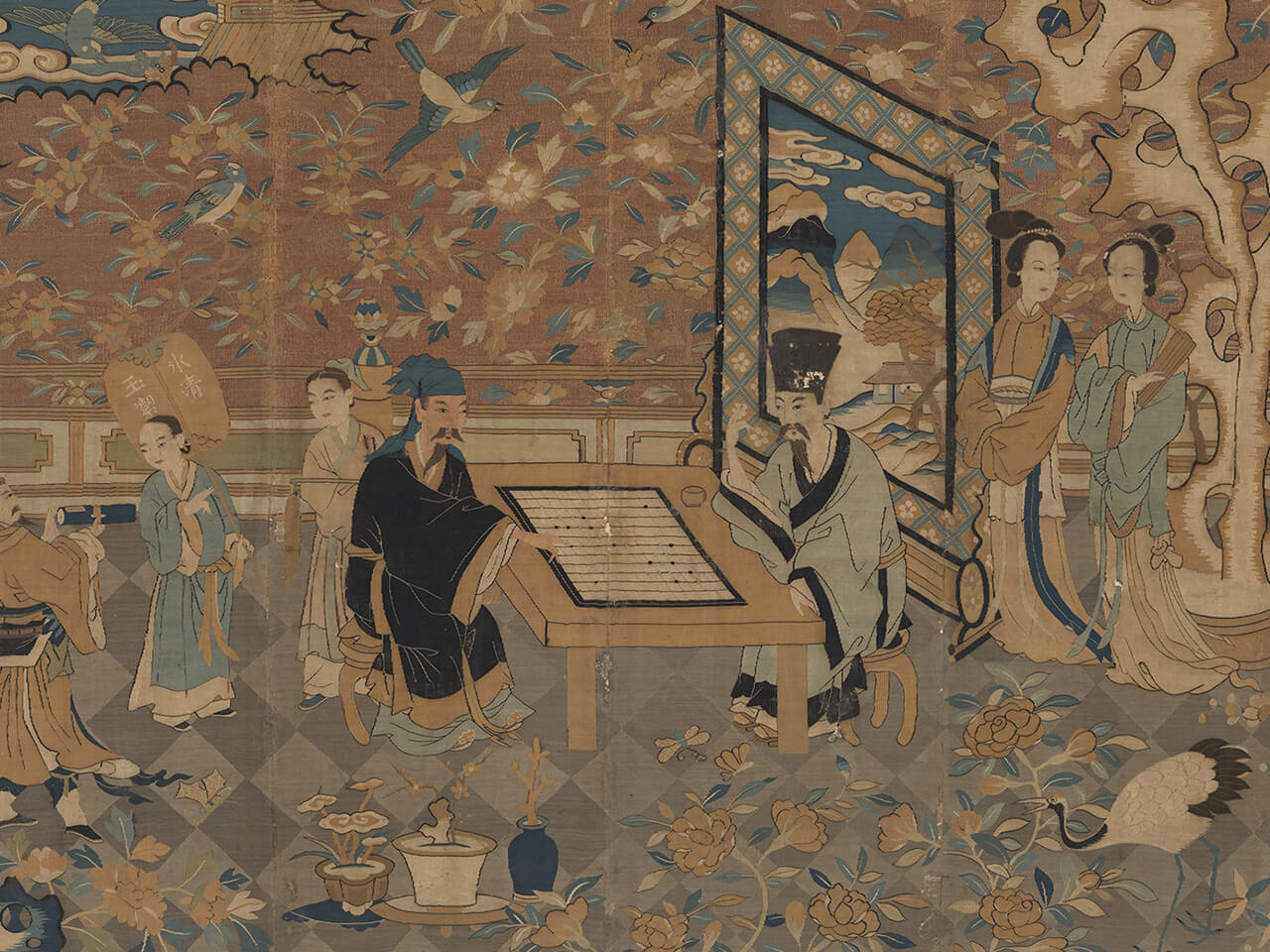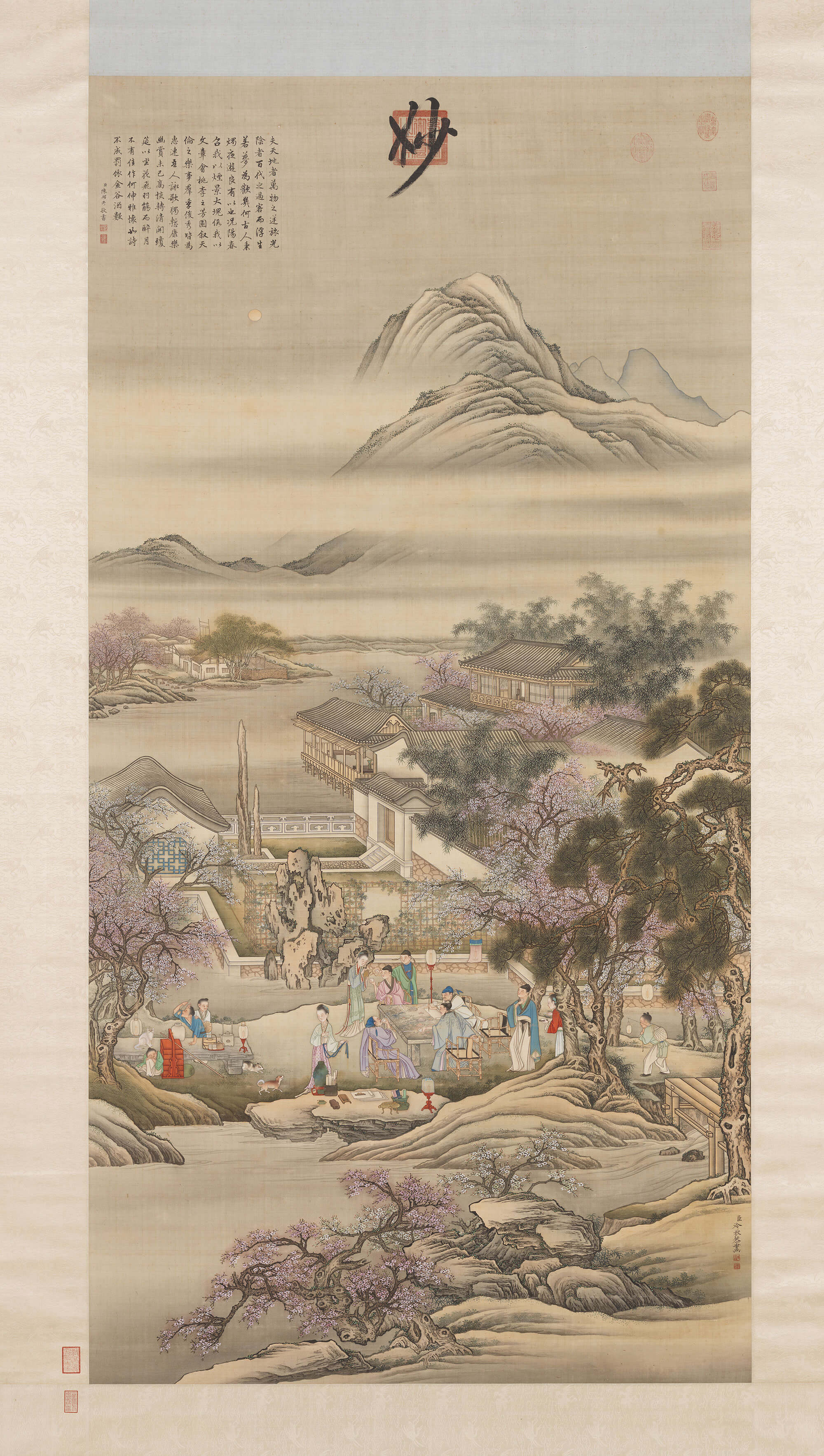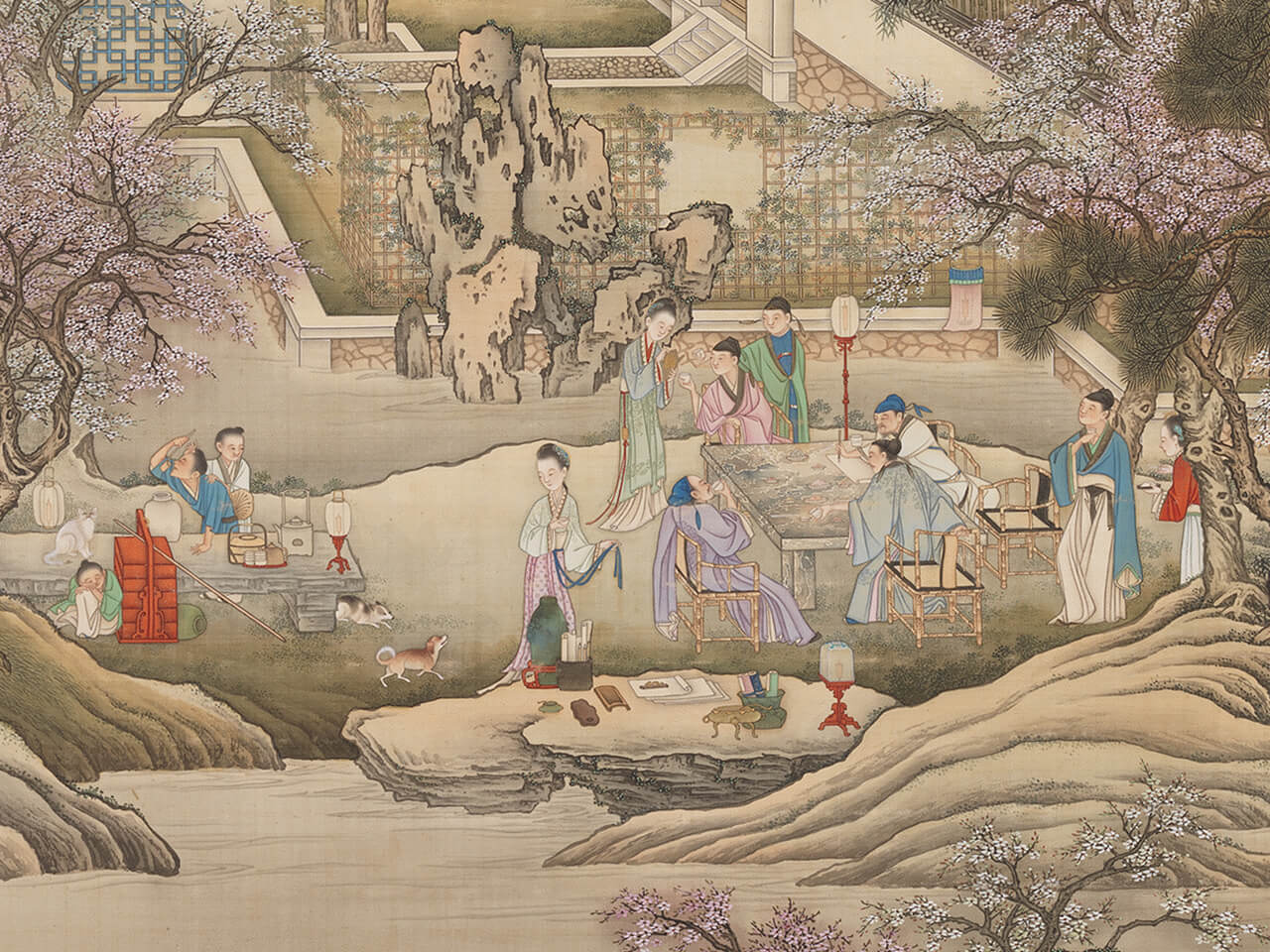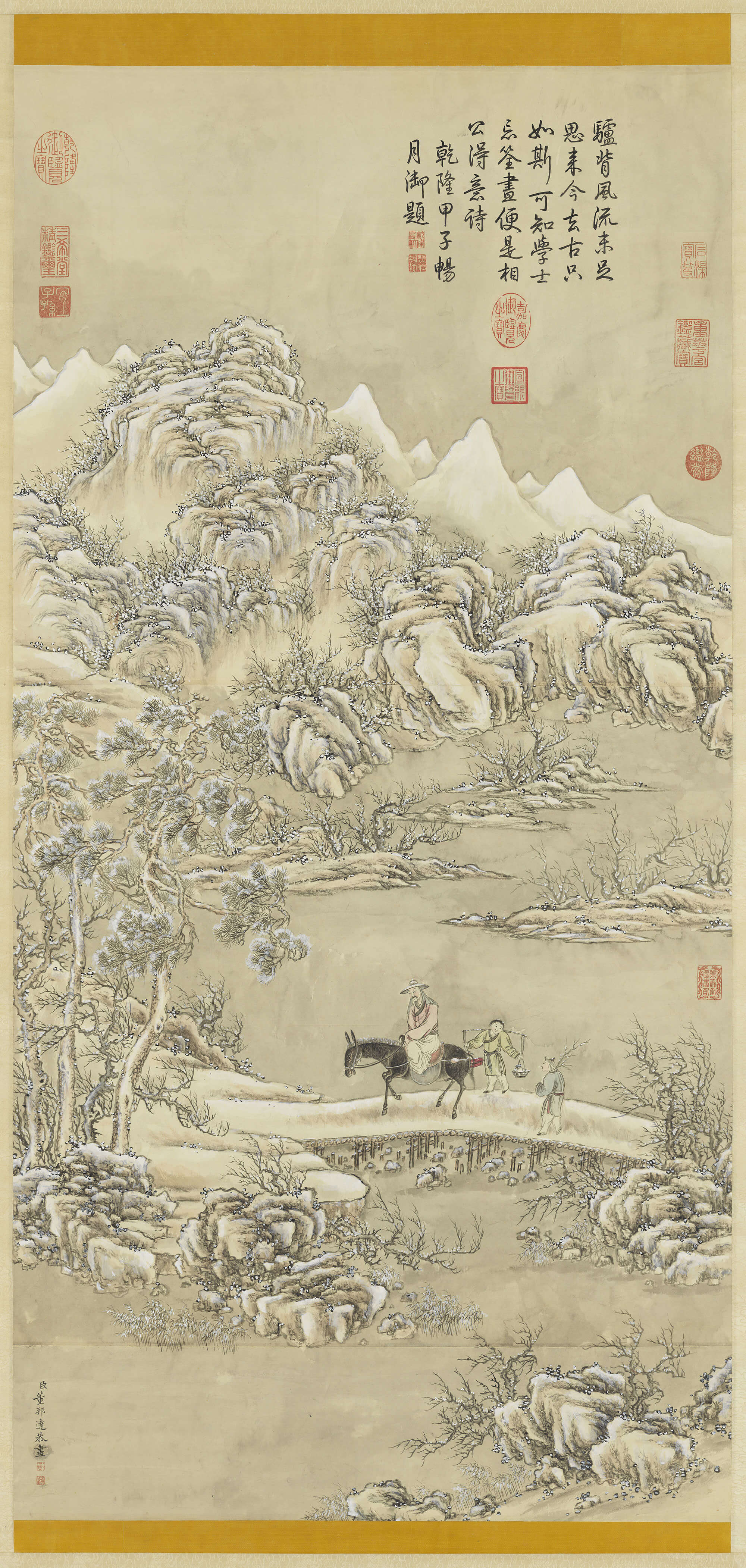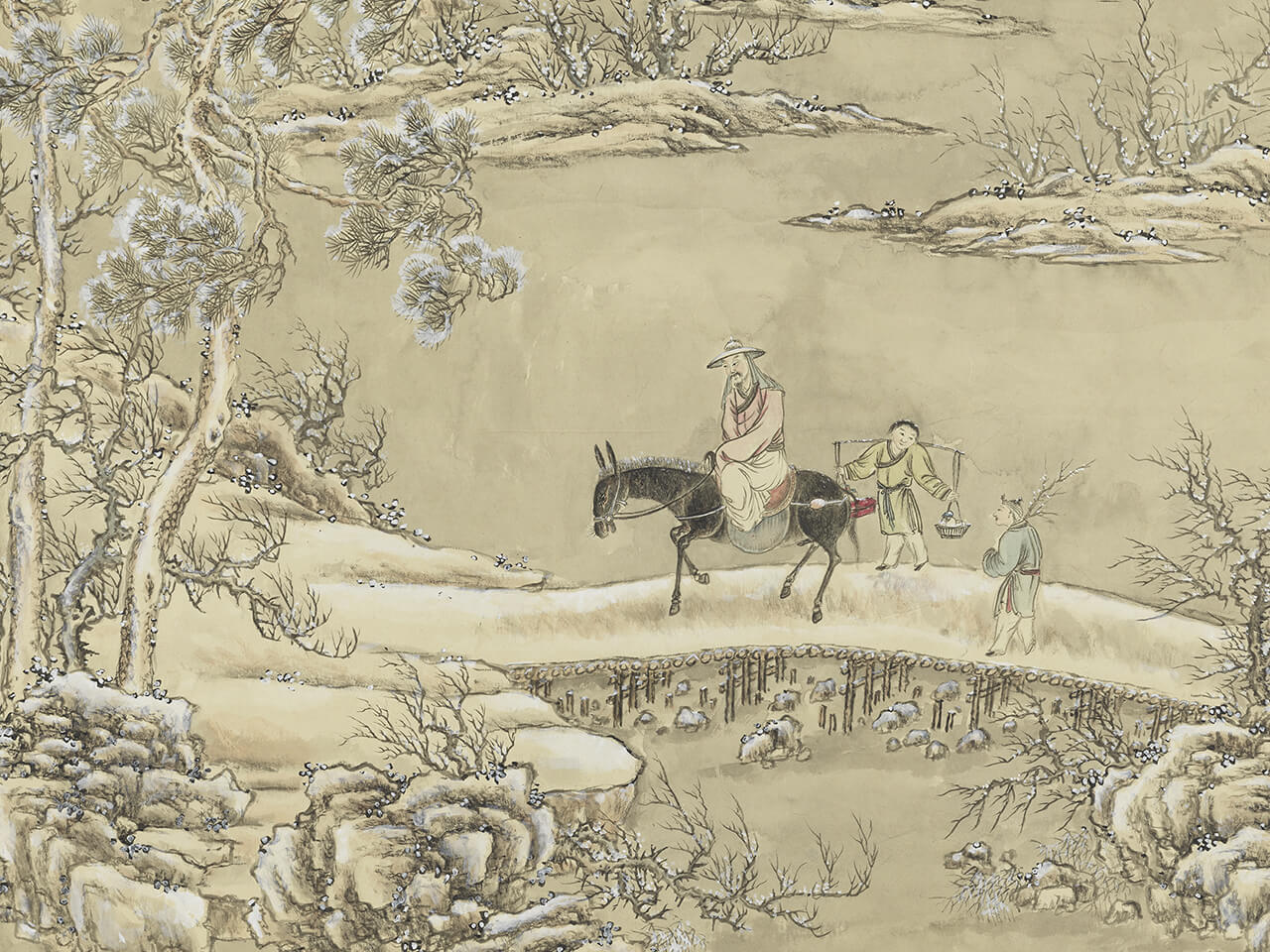Unconventional Talents of the Jin and Tang
Many oft-quoted stories about famous scholars of the Jin and Tang dynasties that survive today became idealized models of these unconventional talents among later generations. These anecdotes include "Composing a Poem in Seven Paces," "String and Bamboo Music at Dongshan," and Li Bai’s "Melody of Peace and Quiet." An important aspect common to these stories is undoubtedly the development of a unique expression in art and culture. The "Four Arts" of zither, Go, calligraphy, and painting not only further reflected individual cultivation but also served as a means of exchange between scholars. The combination of reciting poetry and drinking wine likewise became a form of elegant refinement at scholarly gatherings. This section of the exhibit takes stories of prominent Jin and Tang figures as a starting point to glimpse the stepping stones for elegant gathering activities.
-
Xie An Betting His Villa
- Anonymous, Song dynasty (960-1279)
This hanging scroll tapestry takes the famous Battle of Feishui in 383 AD as its background. It records the story of how a prominent figure, Xie An, in the face of a major attack by enemy forces, retained his composure at a time of crisis while playing a game of Go. The painting shows two people in a luxurious and lofty place playing Go, the corner of a building appearing in the distance to hint at the vast expanse of the villa in which the story takes place. The figure in black, Xie Xuan, is placing a board piece as Xie An, wearing wooden footwear, appears about to win the game as news of victory comes from the front lines.
The technique of weaving and imagery of the figures both reveal elements of tapestry from later periods, indicating this piece probably does not date to the Song dynasty. However, the richness of gradations in the details suggests it probably was based on an ancient model.
-
Banquet at the Peach and Plum Garden on a Spring Evening
- Leng Mei (fl. 18th c.), Qing dynasty
This painting is an imaginative reconstruction from Li Bai’s (701-762) "Preface to the Banquet at the Peach and Plum Garden on a Spring Evening." It shows a garden with peach and plum trees in full bloom as figures banquet and stroll at night. The scroll also depicts scholars drinking wine and composing poetry and includes such vignettes as a lady playing with a small dog and another sneaking a sip of wine as a child attendant takes a nap to the side. The scenery is filled with an atmosphere of joy and relaxation. The preface represents Li Bai’s inspiration at the banquet to encourage people to cherish the beautiful scenery and good times, enjoying them while it lasts.
Leng Mei was a court painter during the reigns of the Kangxi to Qianlong emperors who excelled at painting figures and court scenery. The opulent colors of this work and the refined brushwork make it a typical example of the beautiful detailed style of Qing court art.
-
Seeking Poetic Inspiration on the Pa River Bridge
- Dong Bangda (1699-1769), Qing dynasty
This work is based on the story of Zheng Qi (fl. latter half of the 9th c.) contemplating poetry while crossing the Pa Bridge. It depicts the poet seeking inspiration in a mountain forest filled with wind and snow.
"Moss" dots in white transform the snowy scenery, often depicted with bare and cold desolation, into a riotous scene of the Pa River Bridge adorned by plum trees in full bloom. In the painting, the scholar is shown riding a donkey as one young attendant carries wine on a shoulder pole and the other a plum branch following behind. The mood of pensive contemplation on poetry is not evident here, but instead a more relaxed one of pleasantry and travel prevails.
